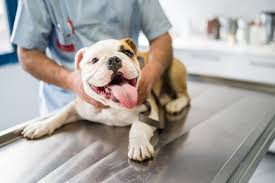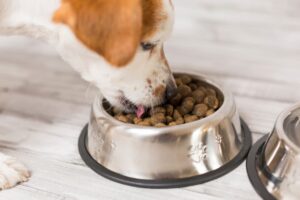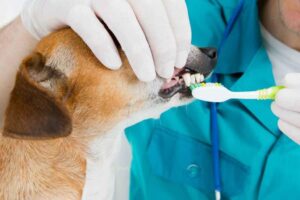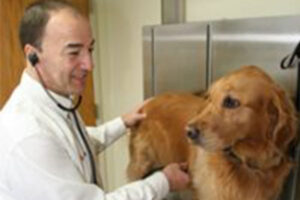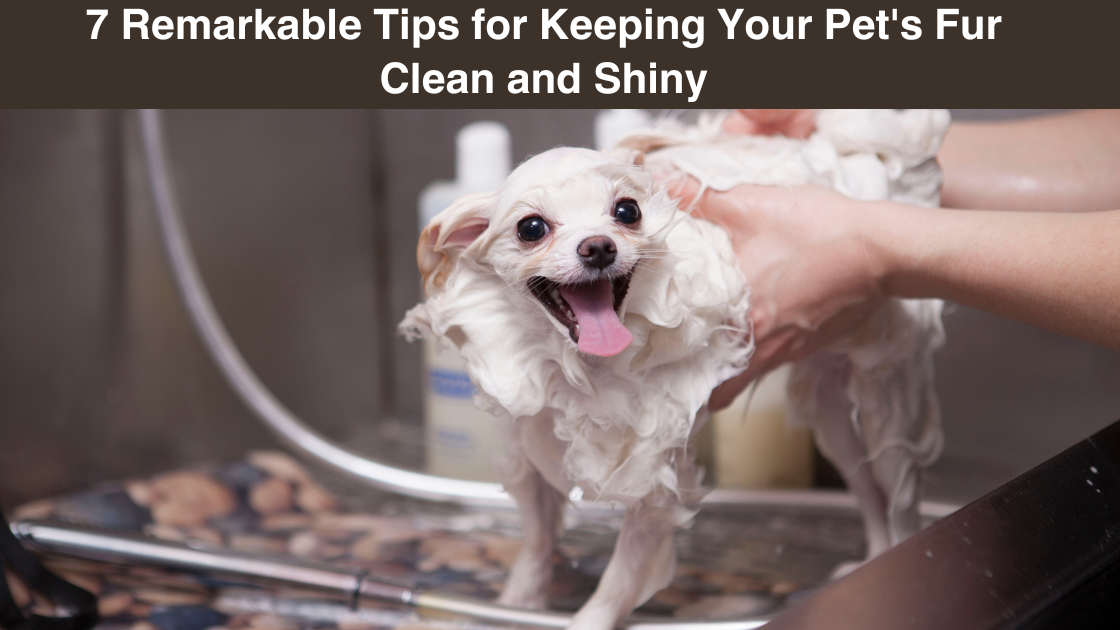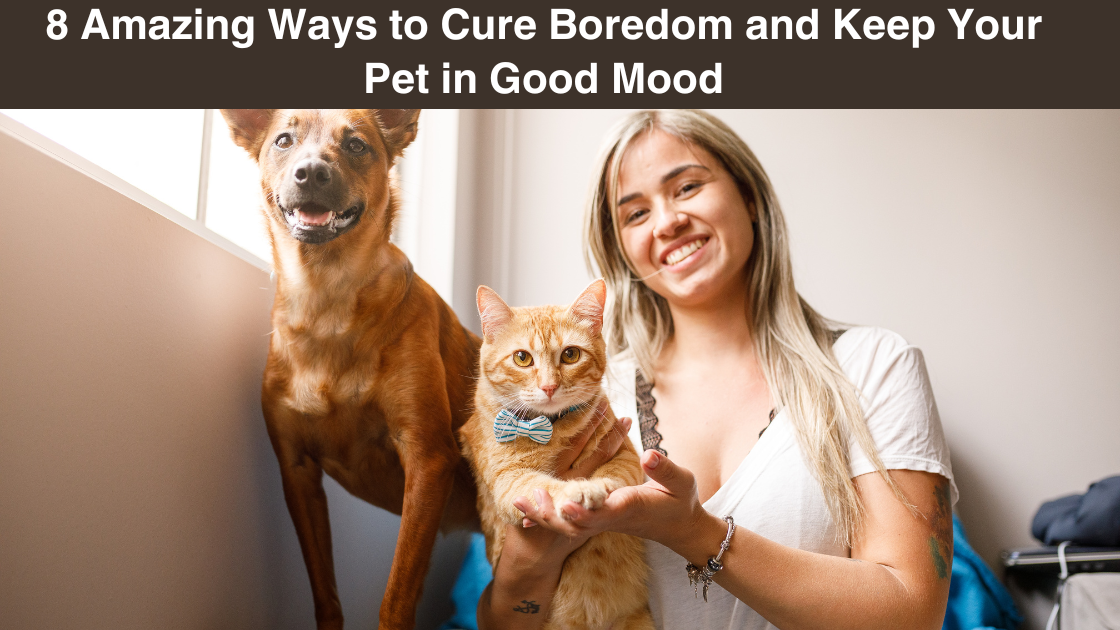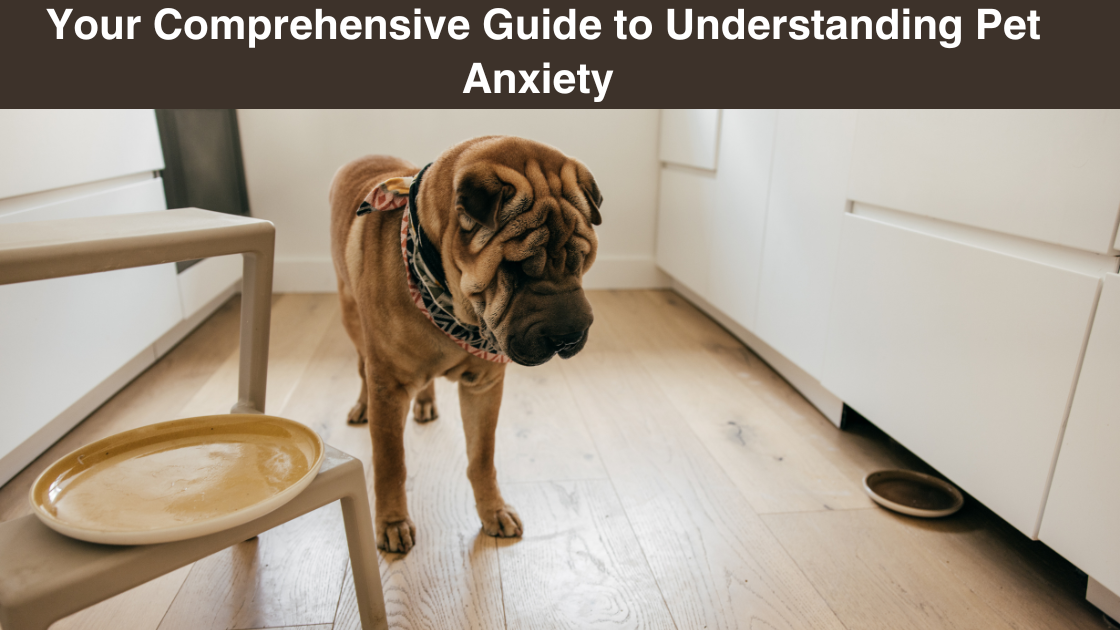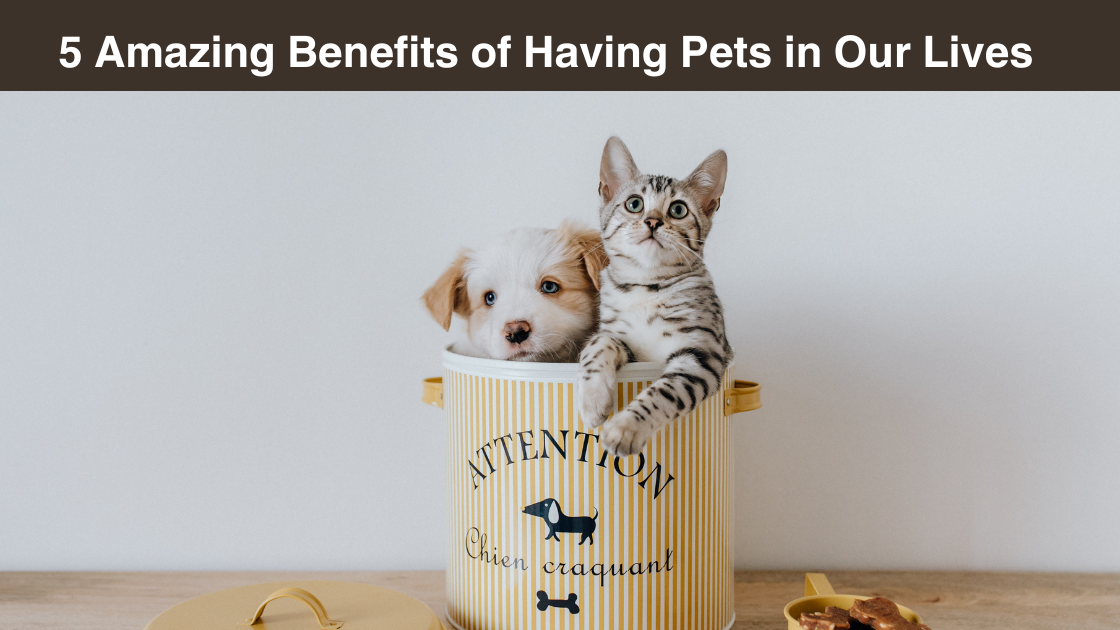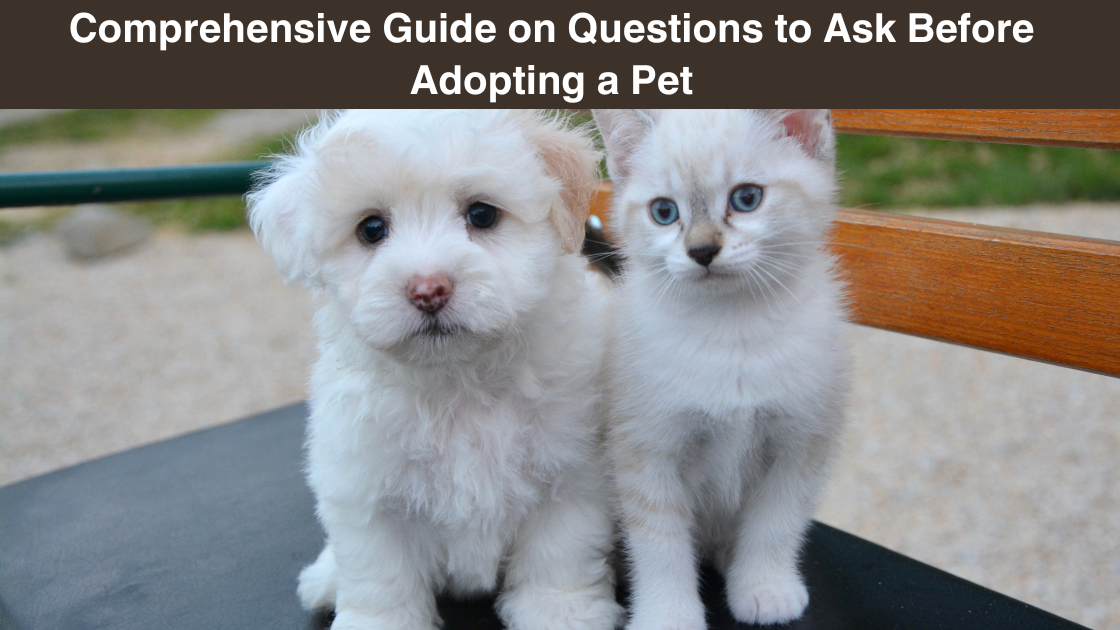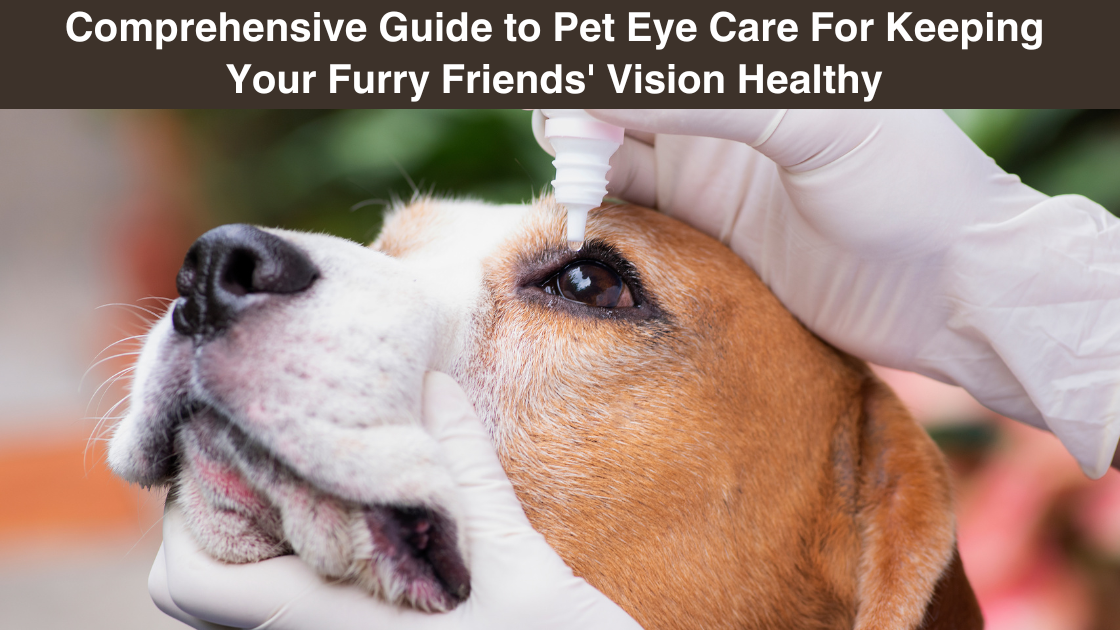Sector 9
Pets bring immeasurable joy to our lives, and keeping their fur shiny and healthy is one way to ensure their well-being and happiness.
Table of Contents
Introduction
A glossy and healthy coat not only enhances their appearance but also serves as an indicator of their overall health.
7 Effective Pet Fur Care Tips
Whether you have a furry feline or a delightful canine companion, here are seven valuable pet fur care tips to keep their fur clean, shiny, and magnificent.
Regular Brushing Sessions

Brushing your pet regularly is crucial to maintaining a clean and shiny coat. It removes loose fur, dirt, and debris, preventing mats and tangles. Also, brushing stimulates blood circulation, which promotes the distribution of natural oils across the fur, leading to a glossy shine. The frequency of brushing depends on your pet’s breed and fur type. Longer-haired breeds generally require daily brushing, while short-haired pets may need it a few times a week.
Regular Baths

Bathing your pet with a gentle, pet-specific shampoo is vital for their hygiene and coat health. Over-bathing can strip their fur of natural oils, leading to dryness and irritation. The frequency of baths varies among pets, but generally, a bath once every 4-6 weeks is sufficient for most dogs and cats. Be sure to rinse thoroughly to remove all traces of shampoo, as leftover residue can cause skin irritation.
Moisturizing Treatments

For pets with dry or itchy skin, consider using moisturizing treatments or conditioners after baths. These products help hydrate the skin and fur, leaving them soft and shiny. However, always use products specifically formulated for pets, as human products can contain ingredients that are harmful to them.
Proper Nutrition
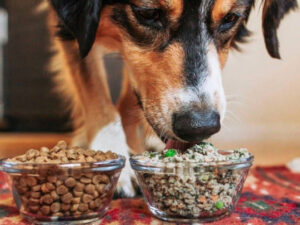
A healthy diet plays a crucial role in your pet’s coat condition. Quality pet food that contains essential nutrients like omega-3 and omega-6 fatty acids contributes to healthy and shiny pet coats. These fatty acids help maintain skin health and retain moisture in the fur, reducing dryness and promoting a radiant sheen. Consult your veterinarian to determine the best diet suited to your pet’s needs.
Note: There might be affiliate links mentioned here. We may receive a commission if you purchase a product through an affiliate link. There is no additional charge for you. Please do your own research before making any online purchases.
Regular Vet Check-ups
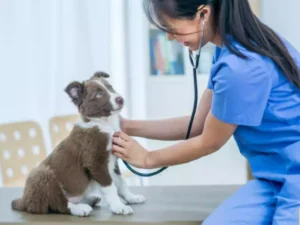
Regular visits to the veterinarian are crucial for your pet’s overall health, including their coat condition. Skin issues, parasites, allergies, or underlying health problems can affect the quality of your pet’s fur. Diagnosing and addressing these issues early can prevent them from worsening and impacting your pet’s coat.
Protection from Sun and Weather

Sun exposure and extreme weather can have an impact on pets, just like they can on humans. Prolonged exposure to the sun can cause skin damage and affect the quality of their fur. Limit their exposure time to direct sunlight, especially during peak hours. In colder climates, protect your pet’s coat from drying out by keeping it warm and dry during walks or outdoor activities.
Stress Management and Regular Exercise

Stress can impact your pet’s health and their fur. High stress levels can lead to excessive shedding or a dull coat. Engage your pet in regular exercise and activities to reduce stress and promote mental and physical well-being. Also, spend quality time with your pet to provide mental stimulation. Maintaining a consistent routine can alleviate stress and contribute to a healthier coat.
Conclusion
A clean and shiny coat not only enhances your pet’s appearance but also indicates their overall health and well-being. By incorporating these pet fur care tips into your routine—regular brushing, proper nutrition, bathing, moisturizing treatments, vet check-ups, weather protection, stress reduction, and exercise—you can help your beloved furry friend maintain shiny and strong fur and ensure they stay healthy and happy throughout their life.
Remember, every pet is unique, so pay attention to their individual needs and consult your veterinarian for personalized advice on maintaining their fur’s cleanliness and shine. Your efforts will be rewarded with a happy, healthy pet with a coat that sparkles with vitality.
Just like humans, our beloved pets also experience moments of boredom. Periods of inactivity might result from a lack of mental and physical stimulation, leading to unwanted behaviors, a bad mood, or even affecting their overall well-being. Keeping your pet engaged is crucial to their happiness and mood.
Table of Contents
Introduction
A dog’s happiness is pivotal to its overall well-being. They can have rough days, but as a responsible pet owner, you can take measures to keep their spirits high. From the right diet to proper hygiene and interactive play, here are key strategies to mitigate your pet’s boredom and elevate their mood.
Playtime

Play should be an integral part of your pet’s life. Engaging in play not only strengthens the bond between you and your pet but also provides them with mental and physical exercise. For dogs, a game of fetch or tug-of-war can be amusing. For cats, chasing a laser pointer or engaging with interactive toys can be pleasant.
Choose activities that cater to your pet’s natural instincts and energy levels. Incorporating play sessions into your daily routine can help break the monotony and keep them mentally stimulated.
Exercise

Physical exercise is vital for pets to release pent-up energy and maintain good health. Dogs need regular walks or runs to stretch their legs and explore the world around them. Cats can benefit from interactive play sessions or access to climbing structures.
Engage them in activities that mimic their natural behaviors, providing both exercise and mental stimulation. Regular exercise also helps to prevent obesity and related health issues, ensuring a happier and healthier pet overall.
Play Toys

Toys are not just items for play but also tools for mental stimulation. For dogs, puzzle toys that dispense treats when manipulated can keep them entertained and mentally engaged. Cats enjoy toys that allow them to stalk, chase, and pounce.
Rotating toys on a regular basis prevents boredom from setting in. While choosing toys for your pets, consider the toys that offer different textures, sounds, or movements to keep them engaged and excited about their playthings.
Chew Toys

Chew toys are more than just playthings; they serve a crucial purpose in keeping your pet content and engaged. Dogs have a natural inclination to chew, especially during teething or when anxious. Chew toys not only keep their teeth healthy but also provide mental stimulation and alleviate stress. Invest in a variety of toys, especially those designed to be durable and safe, preventing destructive chewing and promoting a happier mood.
Stimulation

Enriching your pet’s environment is crucial for preventing boredom and elevating their mood. For dogs, you can incorporate training sessions to challenge their minds. Teach them new commands or tricks, providing mental exercise and strengthening the bond between you and your pet. For cats, create an environment with various heights and hiding spots. Cat trees, scratching posts, and window perches are a few solutions that offer mental and physical stimulation and allow them to explore their surroundings.
Note: There might be affiliate links mentioned here. We may receive a commission if you purchase a product through an affiliate link. There is no additional charge for you. Please do your own research before making any online purchases.
Balanced Nutrition

A balanced diet plays a crucial role in elevating your dog’s health and happiness. Always buy high-quality dog food that meets their nutritional needs. Consult your vet to determine the ideal diet, considering your pet’s age, breed, size, and any specific health conditions. Adequate nutrients and a well-rounded diet contribute to their physical health, which in turn positively impacts their mental well-being.
Good Hygiene
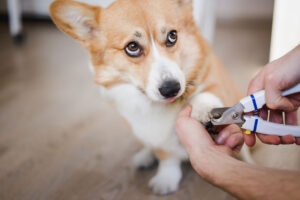
Maintaining your pet’s hygiene isn’t just about appearances; it significantly influences their mood. Regular grooming, including brushing their coat, cleaning their ears, and trimming their nails, ensures their physical comfort and prevents discomfort or irritation. Bathing at suitable intervals keeps their coat clean, further boosting their spirits. Also, oral hygiene is vital. Don’t ignore it for the wellness of your pet. Regular dental care prevents tooth decay and gum diseases that could cause pain, impacting their mood.
Human Interaction
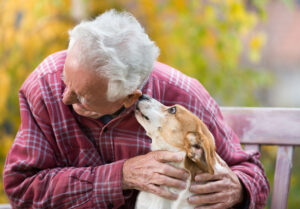
Dogs are inherently social animals, thriving on companionship and interaction. Cats, too, like to interact with humans up to a certain level. Spending quality time with your furry friend contributes significantly to their emotional well-being.
Daily walks, play sessions, and bonding activities strengthen your relationship and elevate their mood. Also, teaching them new tricks or training exercises not only stimulates their mind but also nurtures the human-pet connection, keeping them mentally engaged and emotionally fulfilled.
Conclusion
Boredom can lead to a variety of issues for pets. It may cause behavioral problems, stress, or even depression. Implementing a variety of activities, play, toys, and stimulation into their daily lives can significantly reduce boredom and keep your furry friend content and healthy.
Ensuring your pet’s happiness is a combination of meeting their physical, mental, and emotional needs. A balanced diet, proper hygiene, suitable playthings, and regular human interaction are integral to maintaining their contentment.
Each pet is unique, so observe their preferences and behavior to tailor these activities to suit their needs. By enriching their lives with engaging and stimulating experiences, you’ll foster a happy, lively, and well-behaved companion while building a stronger and more fulfilling bond with them.
For many of us, our pets are not just animals; they’re integral members of our families, providing companionship, love, and sometimes a source of boundless joy. However, just like humans, pets can experience anxiety, a condition that, when left unaddressed, can significantly impact their well-being.
Table of Contents
Introduction
In this blog, explore the world of pet anxiety, including its symptoms, potential causes, and effective treatments to help your furry friend lead a happier, more relaxed life.
Major Signs of Pet Anxiety
Let us go through a few of the most prominent signs of pet anxiety.
- Excessive Panting or Pacing

One of the primary signs of anxiety in pets is excessive panting or pacing. Dogs, in particular, may exhibit restlessness, repeatedly moving from one place to another without any apparent reason.
- Excessive Vocalization

Increased barking, meowing, or other vocalizations can be a manifestation of anxiety. If your typically quiet pet suddenly becomes more vocal, it might be a sign that something is amiss.
- Destructive Behavior

Anxious pets may resort to destructive behaviors such as chewing furniture, scratching walls, or tearing up belongings. This behavior often stems from a need to relieve stress or pent-up energy.
- Changes in Eating Habits

Changes in appetite, whether excessive eating or loss of interest in food, can be indicative of anxiety. Some pets may overeat as a coping mechanism, while others may lose interest in food altogether.
- Withdrawal or Clinginess

While some pets become more withdrawn when anxious, others may become excessively clingy, seeking constant reassurance and attention from their owners.
- Toileting Accidents

House-trained pets may start having toileting accidents in the house when they’re anxious. This behavior is often a result of stress or fear.
- Aggression

Anxiety can sometimes manifest as aggression, particularly in situations that trigger fear. A normally friendly pet may become defensive or even aggressive when feeling threatened.
Common Causes of Pet Anxiety
To understand pet anxiety thoroughly, let us go through some of the most common causes of pet anxiety.
- Changes in Environment

Pets are creatures of habit, and significant changes in their environment, such as moving to a new home or rearranging furniture, can trigger anxiety.
- Separation Anxiety
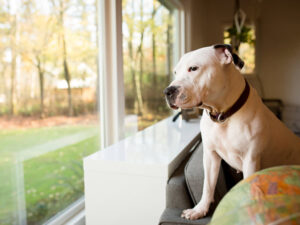
Many pets experience separation anxiety when left alone. This can lead to destructive behavior as they try to cope with the stress of being apart from their owners.
- Lack of Socialization

Pets that haven’t been adequately socialized, especially during their early development stages, may exhibit anxiety in new or unfamiliar situations.
- Past Trauma

Pets with a history of abuse or trauma are more susceptible to anxiety. Loud noises, certain scents, or even specific objects may trigger memories of past trauma.
Note: There might be affiliate links mentioned here. We may receive a commission if you purchase a product through an affiliate link. There is no additional charge for you. Please do your own research before making any online purchases.
- Medical Issues
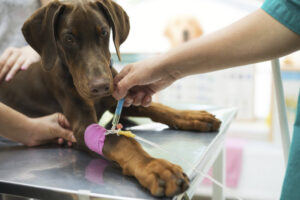
Some medical conditions can contribute to anxiety in pets. Pain, discomfort, or neurological issues can manifest as behavioral problems.
Effective Treatments for Pet Anxiety
After understanding the major symptoms and causes of pet anxiety, you must be seeking ways to prevent or resolve them. Here are a few effective ways to treat pet anxiety.
- Create a Safe Space

Provide your pet with a designated safe space where they can retreat when feeling anxious. This could be a cozy corner with their bed or a crate.
- Behavioral Training

Positive reinforcement and behavioral training can be highly effective in managing pet anxiety. Reward calm behavior and gradually expose your pet to anxiety-inducing situations in a controlled manner.
- Regular Exercise

Physical activity is an excellent stress reliever for pets. Ensure your furry friend gets regular exercise to help burn off excess energy and reduce anxiety.
- Comforting Products

Consider using comforting products like anxiety wraps or pheromone diffusers, which can help create a calming environment for your pet.
- Professional Help
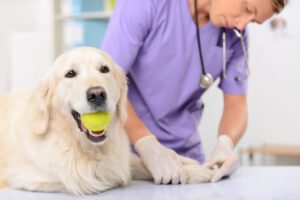
In severe cases, seeking the assistance of a professional animal behaviorist or trainer may be necessary. They can provide tailored strategies to address your pet’s specific anxiety triggers.
- Medication
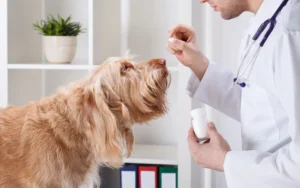
In some instances, veterinarians may prescribe medications to manage severe anxiety. These medications are typically used in conjunction with behavioral interventions.
- Routine and Predictability
 Establishing a routine provides a sense of predictability for your pet. Consistent feeding times, regular walks, and a structured daily routine can contribute to a calmer environment.
Establishing a routine provides a sense of predictability for your pet. Consistent feeding times, regular walks, and a structured daily routine can contribute to a calmer environment.
Conclusion
Understanding and addressing pet anxiety requires patience, observation, and a commitment to your pet’s well-being. By recognizing the signs of anxiety, identifying potential causes, and implementing effective treatments, you can help your furry friend lead a happier, more relaxed life.
Remember, a happy and stress-free pet is not only beneficial for them but also deepens the bond between you and your beloved companion.
As a pet owner, you’re likely well aware of the joy and companionship pets bring into your life. Pets become a cherished part of our families, offering unconditional love and affection. When you come back home after a long, tiring day, their hug or tail-wagging is enough to rejuvenate you.
Table of Contents
Introduction
In return, you just have to ensure their well-being and happiness. Regular grooming is a crucial aspect of pet care that’s sometimes ignored. It not only helps your furry friend look and smell their best but also contributes to their overall well-being.
Here are 10 amazing reasons why you should get your pet groomed.
Good for Healthy Skin and Coat

One of the most significant benefits of regular pet grooming is maintaining a healthy skin and coat. Grooming helps to remove dirt, debris, and dead hair, preventing matting and tangling. This promotes better air circulation through the coat and reduces the risk of skin issues.
Helps to Prevent Matting

Matting is a common problem among pet animals, especially for pets with longer hair. It can be uncomfortable and even painful for your pet, leading to skin irritation and potentially more severe issues if left unaddressed. Regular grooming sessions help to prevent matting and ensure your pet’s comfort.
Control Shedding
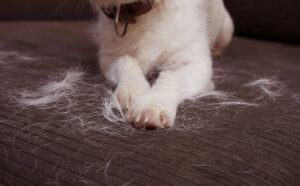
Shedding is a natural process, and regular grooming can significantly reduce the amount of hair that ends up on your furniture, clothes, and floors. It’s especially beneficial during seasonal shedding, keeping your home cleaner and more comfortable during such times.
Avoid Overheating

Such dog breeds that have heavy coats can be prone to overheating, especially during hot summer months. Regular grooming can help thin out and trim their fur to keep them more comfortable in the heat. It reduces the chances of irritation and makes them feel light.
Healthier Paws
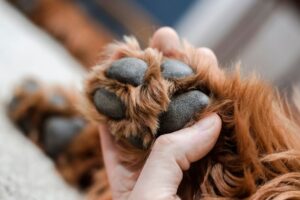
Grooming isn’t just about fur. It also involves caring for your pet’s paws. Trimming their nails helps prevent painful overgrowth and makes walking more comfortable. Additionally, cleaning paws can remove debris, reducing the risk of infection. This procedure is also crucial for pet owners, as they often get scratches due to longer nails.
Prevent Ear Infections

Dogs with floppy ears are prone to ear infections. Such infections can make them feel dioriented during earlier days and may lead to deafness over time. Regular grooming helps keep their ears clean and free from moisture, decreasing the chances of painful ear infections. It is quite one of the tempting reasons to get your pet groomed.
Note: There might be affiliate links mentioned here. We may receive a commission if you purchase a product through an affiliate link. There is no additional charge for you. Please do your own research before making any online purchases.
Spot Health Issues Early

Grooming sessions provide an excellent opportunity to check your pet for any abnormalities or signs of illness. Early detection proves crucial to assessing and addressing health issues promptly, saving your pet from unnecessary suffering.
Better Behavior
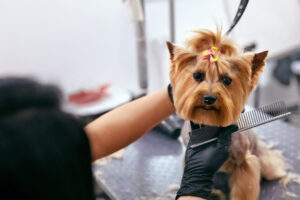
Grooming sessions often include gentle handling, which can help anxious or nervous pets become more accustomed to human contact. This can lead to better behavior and less stress during vet visits or other situations. Such pet care often soothes the minds of pet owners too.
Better Bonding
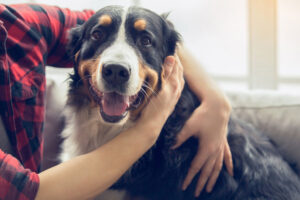
Grooming is a bonding experience between you and your pet. It’s a time when your pet can feel pampered and loved. This strengthens the bond between you and your furry companion, leading to a happier and healthier relationship.
Smell and Look Good
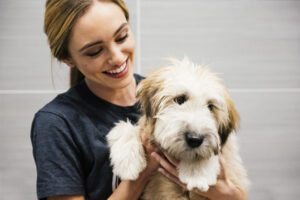
Good appearance is one of the most prominent reasons why you should get your pet groomed. Regular baths and grooming help your pet smell fresh and clean, eliminating unpleasant odors that can result from dirt and natural oils. While you do grooming at home, you ensure your pet looks and feels their best.
Conclusion
In summary, regular pet grooming isn’t just about keeping your furry friend looking fabulous; it’s an essential aspect of their overall health and well-being. From preventing skin issues and matting to controlling shedding and spotting health problems early, grooming plays a crucial role in your pet’s life.
Also, it’s an opportunity for you to bond with your pet and provide them with the love and care they deserve. So, schedule your pet’s next grooming session today and watch them prance out looking and feeling fantastic. Your pet will thank you with wagging tails and purrs of delight.
Adopting a pet helps humans find unparalleled companionship and works like a tremendous stress buster. When you come home after a long and tiring day, their innocent look and tail wagging are enough to make you smile. While they help in making our lives happy and fulfilling, we should also look for the appropriate ways to keep a dog happy and healthy for a long time.
Table of Contents
Introduction
When you take good care of your pet, you are ultimately taking good care of yourself. If you own a dog or even a cat and are looking for tips to keep your dog healthy and happy, this article is just for you. Keep reading for effective tips about how to keep a dog healthy and prolong their life.
Manage Their Stress and Anxiety

Stress and anxiety are not only one of the major causes of health issues in humans but they are also one of the leading causes of health problems in pets. Stress is the cause of 80% of chronic illnesses in humans and has similar effects on pet dogs and cats too. It is exhausting and deteriorates their immune strength.
When too much anxiety or stress happens in a pet, auto-immune diseases are born, the gastrointestinal system becomes upset, and they are no longer able to absorb a proper amount of nutrients from their meals. Take effective steps to keep the stress at bay. Avoid yelling, doing parties, or playing loud music in their vicinity. Spend time with them and make them smile; they will make you smile.
Feeding a Proper Diet for Nutrition

A balanced diet and adequate nutrition are essential for every living being, be it a human, dog, or cat. Imbalanced diets can cause obesity and may lead to many other health issues. Extra body weight puts extra stress on their bones and organs. It puts them on the verge of diabetes, thyroid disease, pancreatitis, and other disorders.
If you want to prolong the life of your pet, practice portion control. Buy food items from reliable brands for feeding your dog. Vet the ingredients and ensure they are not harmful for their lives due to allergies, tooth decay, and other ailments due to poor quality food. Don’t overfeed and always choose high quality, grain-free food for the better health of your pets.
Exercise and Going Outdoor

Exercise, sunshine, and fresh air are crucial for a healthy heart and sane mind. These are beneficial for your health too. Along with a proper diet, ensure that your pet is getting sufficient exposure to nature. Let them smell the flower, hear the birds tweeting, and explore grass and soil through their paws. It is necessary to nurture your dog’s mind, body, and soul.
Go for frequent walks, encourage them to exercise and be physically active as much as they can. Walks are a very mentally stimulating activity for pets, especially dogs. Being physically fit keeps their hearts pumping longer and aids in a long life. Keep your dog’s age and endurance level in consideration while going outdoors for physical activity. Also, bring water to avoid dehydration in cases of exhaustion.
Note: There might be affiliate links mentioned here. We may receive a commission if you purchase a product through an affiliate link. There is no additional charge for you. Please do your own research before making any online purchases.
Practice Extensive Oral Care
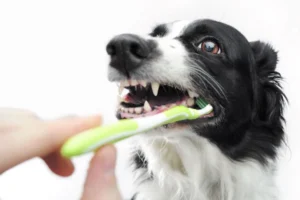
Dental disease often occurs gradually but may affect the health of your dogs significantly. You may not even have a hint about it and it may be deteriorating your dog’s health and life right now. Periodontal disease and cavities may lead to digestive and other health issues. Next time, while cleaning and bathing your dog, don’t forget to take a look inside their mouth.
Such dental issues can cause organ failure and heart disease. Just as you brush your teeth and follow strict mouth-based hygiene, ensure doing the same for your pets on a regular basis. You can use a children’s toothbrush, wet rag, or sock over your finger. Prefer to feed dry food over canned food. Also, schedule an annual appointment with a vet for a dental checkup.
Grooming and Hygiene for Health
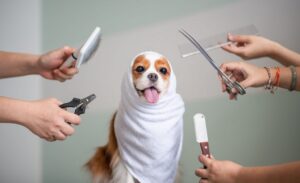
Grooming is extremely important for the health and longevity of your pet. Keep their nails trimmed, brush their teeth regularly, and clean their ears to reduce the risk of infection. Keep their coat free of mats and parasites to save their skin from infections. Check and treat any potentially harmful lump or bump before it significantly affects their health.
When it comes to the intensity and frequency of grooming, different breeds require different levels of grooming. Use top-quality grooming products for your pets to keep any risks of irritation and allergies at bay. Along with offering grooming care at home, schedule professional grooming every month or every other month. Visit a local pet salon to keep your pet’s skin and coat well-managed.
Conclusion
Learn how to keep a dog happy and healthy and implement them in your daily life to ensure the best health and longevity of your pet dog. Try to resolve the causes of stress and anxiety to keep them happy. Their happiness and calmness will transcend back to you.
Always give proper and nutritional food but don’t overfeed. Spend enough time outdoors with them and encourage them to go for walks and physical activity. Keep an eye on their dental health and practice extensive grooming care to save them from infections and irritations.
There is a lot to do when it comes to the health and longevity of your furry companions. Along with implementing the above-mentioned tips to keep your dog healthy and happy, keep seeking the best ways to prolong their long life. Make their life happy to make your life happier.
Do you often think about how you could benefit from having a pet in your family? Do you feel curious about the benefits of adopting a pet when you see one at your friend’s home? Do you often think about how wonderful owning an animal can be? Or how can beautiful bonds be formed between humans and animals?
Table of Contents
Introduction
Well, pets are not “just” animals, as they seem. Their companionship affects the lives of owners in a significant way and the benefits of owning a pet are endless. In this blog, we are going to explore and elaborate on some of the most prominent benefits of having a dog, cat, or any other domesticated animal as a pet in your life.
Prominent Benefits of Owning a Pet
Adopting a pet changes a healthy lifestyle in a significant way. Their addition to your life plays an important role in fighting several mental and emotional issues like depression, anxiety, stress, bipolar disorder, and PTSD. There are many more benefits of having a dog or any other pet; let us elaborate on five major ones.
- Combating Anxiety and Depression

We are living in a fast paced world and almost every individual is overwhelmed with too much workload and commitments. Such a stressful lifestyle invites anxiety and depression. Having a coping mechanism becomes necessary to overcome these psychological problems and adopting a cat or dog offers a great coping solution.
Adopting and caring for a pet helps ease anxiety and build self-confidence. If you are one of those people who feels anxious about going out into the world, having a pet can be a great way to beat such anxiety while avoiding loneliness at the same time. Pets also help you become more mindful and appreciate the joy of the present because they tend to live in the moment and don’t hold grudges from previous days.
- Increasing Physical Activity

The modern lifestyle is also popular as a sedentary lifestyle. Lack of physical activity causes many health issues and makes individuals feel older than they are. Being physically active optimizes weight, improves brain health, strengthens bones and muscles, lowers the risk of disease, and also improves your ability to do daily activities.
Keeping a pet helps you stay fit and healthy. When you regularly take a pet, like a dog, for a walk, hike, or run, you include healthy daily exercise into your schedule. Such activity is great for the animal and proves to be a fun and rewarding way for you to stay fit. As a pet owner, you are more likely to meet your daily exercise requirements.
- Providing Companionship

In this fast-paced world, finding a close companion is tough. Extended isolation and loneliness often trigger symptoms of depression. Companionship combats the feelings of loneliness and is essential for a pleasant and fulfilling life. It increases a sense of purpose, helps prevent illness, and even adds years to your life. Companionship is one of the most significant benefits of having a dog or any other pet.
Offering your time and care to a pet not only helps you overcome loneliness but also makes you feel needed and wanted. Their companionship offers an opportunity to shift your focus away from problems that may cause depression. Many pet owners talk to their dog or cat; pets also respond by wagging their tail (or maybe purring if it is a cat). Such behavior can make anyone feel delighted and content at the moment.
Note: There might be affiliate links mentioned here. We may receive a commission if you purchase a product through an affiliate link. There is no additional charge for you. Please do your own research before making any online purchases.
- Helping to Socialize More

Humans are social animals and socialization is important to maintain the fabric of humanity. When you meet and spend time with other people in a friendly way, you enjoy your life in a true way and make it fulfilling. However, modern lifestyles are making it difficult for individuals to socialize with others but having a pet can help overcome this issue. More socializing or meeting new friends is one of the major benefits of owning a pet.
Pet care helps you meet new people. They offer a viable reason to socialize and can be great assets for their owners to start and maintain new friendships. Pet owners often stop and initiate conversation when they meet other pet owners while on walks, hikes, or in a dog park. You also meet new people in pet stores, clubs, and training classes due to your pet.
- Adding Stability to Your Routine

Randomness in your daily routine deteriorates the quality of your life. A well-structured and purposeful life is necessary for your mental as well as physical well-being. You should have a predetermined objective to follow every day. While seeking out ways that can add stability and direction to your life, adopting a pet can offer a viable solution.
Most pet animals, especially dogs, require a set of certain duties on a regular basis, such as feeding, walking, playtime, and excretion schedules. Accomplishing all these pet care needs adds consistency to your daily routine. Following a routine is necessary to keep your pet sane and calm, and it also helps you gain peace of mind.
Conclusion
A pet animal, be it a dog, cat, or some other domesticated animal, adds a whole new dimension to your life when you adopt them. They bestow a sense of stillness on your psyche. No matter what kind of mood you may be having at the end of the day—depressed, anxious, or stressed—one simple look from your pet can calm you down.
When you adopt a pet, you’ll have to get out of bed to feed, exercise, and care for them. This care and grooming effort not only makes your pet feel a sense of belongingness but also makes you feel valued too. You get many opportunities to socialize more and make new friends due to them. Don’t miss out on these amazing benefits of owning a pet; get one (or more) for yourself and your family today.
Adopting a pet is a big, life-changing decision. It is a long-term commitment that can last a decade or more. There are various elements to consider before adopting a pet for your lifestyle to ensure that you make an informed and responsible decision.
Table of Contents
Introduction
This essay delves into the critical questions you should ask yourself and think about before adopting a pet. Whether you want to adopt a dog, a cat, a bird, a rabbit, or any other animal, the basics of responsible pet ownership remain the same. With over 67% of US families owning pets, it’s critical to ensure you’re prepared to take on the obligations of pet ownership.
What makes you want a pet?

Before delving into the logistics and practicality of pet ownership, you should think about your goals. Understanding your motivation for wanting a pet will help you make a better educated selection.
Are you looking for company, unconditional love, or someone to spend your life with? Do you want a pet for emotional support, security, or to teach responsibility to your children? Knowing your reasons might help you choose the correct type of pet and prepare for the responsibilities that come with it.
What kind of pet is right for you?

Your lifestyle has a big impact on the kind of pet that will be right for you. Take a look at the following:
Activity level: Are you an active person who appreciates outdoor activities, or do you prefer a more laid-back way of life? Some pets, such as dogs, require daily exercise, while others, such as cats, may be more independent.
Living Space: Do you live in an apartment or a large house with a yard? This will have an impact on the size and breed of pet you can comfortably accommodate.
Allergies: Do you or any members of your household have allergies to pet dander? This will influence your selection of hypoallergenic pets.
Travel: How frequently do you travel? Some pets may be more understanding of your travel plans than others.
Time commitment: Are you willing to invest the time required for your pet’s training, grooming, and daily care?
Are you able to afford a pet?

Owning a pet has financial obligations. Assess your budget before adopting to ensure you can easily pay for your pet’s requirements. Consider the following expenses:
- Food
- Veterinary services
- Grooming and grooming products
- Obedience and training classes
- Toys and enrichment
- Insurance for pets
- Fees for licenses and registration
- Immediate medical attention
- If you are on vacation, boarding or pet-sitting
- Miscellaneous costs
It is critical to maintain an emergency fund in case of unforeseen medical bills. Veterinary expenditures can quickly mount up, so having a financial safety net in place is critical.
Where are you going to get your pet?
There are various options to consider when adopting a pet for your lifestyle:

Animal Shelters: Adopting from a shelter or rescue organization is a wonderful way to help animals in need. Many great creatures are waiting in shelters for loving homes.

Breeders: If you’re keen on a specific breed, you can buy from a respectable breeder. Make sure to do your homework and choose a reputable breeder.

Pet Stores: While some pet stores provide pets for adoption, it is critical to study their sources and verify they adhere to ethical and humane methods.
Private Individuals: You may encounter people trying to rehome their dogs. In this scenario, inquire about the pet’s past and the grounds for rehoming.
Choosing a trusted source is critical to ensuring your future pet’s health and well-being.
Are you prepared to make a commitment?

Pets are not disposable; they are companions for life that rely on you for their well-being. Before you adopt, consider whether you are ready for the long-term commitment that comes with pet ownership. Consider the following time frame:
- Dogs: Depending on the breed and size, dogs can live for 10–15 years or longer.
- Cats: Cats have a lifespan of 15-20 years or more.
Your dedication to caring for your pet should last their entire life. This includes giving them love, attention, and medical care as they grow older.
Are you prepared for the training and socialization?

To become well-behaved and confident companions, most pets, particularly dogs, require training and socialization. Consider whether you are willing to devote time and effort to:
- Litter training or housebreaking
- Fundamental obedience training
- Interaction with other animals and humans
- Dealing with behavioral difficulties or fears
- Think about whether you have the ability and patience to train your pet on your own or if you’ll need the assistance of a professional trainer.
What type of housing do you have?

Your living condition has a big impact on your pet’s comfort and well-being. If you are renting, inquire about the pet policies of your landlord or housing association. Make sure your living area can suit your chosen pet’s individual needs, such as space, safety, and facilities.
Do you have any children or pets?
If you have children or other pets, you should think about how they will get along with your new pet. Not all pets get along, and some may have special needs when it comes to dealing with youngsters. It is critical to maintain a harmonious environment for all parties concerned.
What are your pet’s physical and emotional requirements?
Different pets have different requirements, such as:

Dietary needs: Learn about what your pet should consume, including portion quantities and frequency.

Exercise requirements: Determine how much physical exercise your pet needs to stay healthy.
Mental stimulation: To avoid boredom and behavioral concerns, many pets require mental challenges and enrichment.
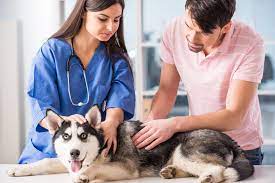
Veterinary care: Regular check-ups and vaccines are critical for the health of your pet.
Do you have a plan for the unexpected?
Life is full of surprises, and unexpected events might occur. Are you ready for:

Medical emergencies: Accidents and diseases can occur at any time, and medical costs can be prohibitively expensive. Do you have a plan in place to cover unforeseen expenses?
Changes in lifestyle: Can you alter your life to suit your pet when circumstances change, such as relocating or changing jobs?
Do you have enough time for your pet?

Pets demand time and attention. Examine your daily schedule to see if you can commit to:
- Grooming, feeding, and cleaning up after your pet
- Providing physical activity, play, and interaction
- Investing time in training and socializing
- Making regular veterinary appointments
Have you considered the emotional aspects of pet ownership?
Emotional challenges come along with the joy of adopting a pet for your lifestyle. Be ready for:

The unavoidable loss: Because pets have shorter lifespans than humans, grieving their loss can be emotionally taxing. Are you prepared to face this unavoidable aspect of pet ownership?
Responsibilities: Are you emotionally prepared to care for your pet, including their health, happiness, and well-being?
Changes in lifestyle: Your pet may have an impact on your lifestyle, reducing your ability to travel or participate in certain activities. Are you prepared to make these changes?
Are you familiar with the local laws and regulations?
Check your local pet ownership rules and regulations. This can include licensing and immunization requirements, leash rules, breed limitations, and noise ordinances. Compliance with these laws is critical for responsible pet ownership.
Are you prepared to pay the price?

Pet ownership expenditures go beyond the initial adoption or purchase. You should budget for:
- Provisions and food
- Veterinary care on a regular basis
- Unexpected medical expenses
- Pet insurance (optional but strongly advised)
- Grooming and hygiene items
- Fees for licensing and registration
- Pet boarding or sitting (if you travel)
Budget for these expenses ahead of time to reduce your financial burden and ensure your pet’s well-being.
Note: There might be affiliate links mentioned here. We may receive a commission if you purchase a product through an affiliate link. There is no additional charge for you. Please do your own research before making any online purchases.
Can you plan for the future of your pet?

You should have a plan in place for your pet’s future as a responsible pet owner in case something happens to you. Consider:
Appointing a caregiver: Select a responsible and willing friend or family member to care for your pet if you are unable to.
Legal documents: Make a will or trust that details your preferences for your pet’s care and finances.
Emergency contacts: Include specific instructions and contact information for your pet’s care in the event of an emergency.
Have you done any research on the breed or species?

Before adopting, it is critical to conduct research about the breed or species of interest. Each has its own set of traits, care needs, and potential health risks. Discover their personality, temperament, and whether they are a suitable fit for your lifestyle.
Are you capable of handling the mess and taking responsibility?
Pets can be dirty, shedding hair, creating excrement, and occasionally inflicting damage. Are you prepared to take on the job of cleaning up after your pet and keeping your living space clean?
Do you have any allergies or health issues?

Consult a healthcare expert before adopting a pet if you or a family member have allergies or underlying health concerns. Some animals may cause allergies or aggravate certain medical issues.
Are you ready for the job?
Pet ownership is a labor of love. Meeting your pet’s needs takes time and effort. Are you prepared to put in the effort required to feed, groom, train, and maintain your pet’s overall health and happiness?
Are you willing to commit to regular exercise and play?
Pets require physical and mental stimulation in order to remain healthy and happy. Are you willing to exercise and play with your pet on a regular basis? This is particularly crucial for dogs, as many breeds require regular exercise to be happy.
What are the ethical constraints?
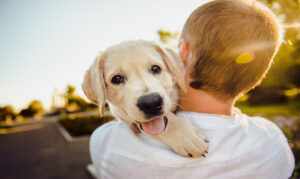
Consider the following ethical implications of pet ownership:
Adoption vs. Purchasing: Adopting from a shelter or rescue group is frequently regarded as a more ethical option because it gives a home for animals in need.
Spaying or neutering: Part of responsible pet ownership is spaying or neutering to help regulate the pet population and reduce the number of abandoned animals.
Choose a Breeder: Choose a breeder who follows ethical breeding procedures and prioritizes the health and well-being of the animals if you decide to buy from one.
Adopting an Elderly Pet: Senior pets are sometimes disregarded in favor of puppies and kittens. Consider providing a caring home for a senior pet.
FAQs
What is the significance of adopting a pet?
Getting a pet is a big decision because it requires a long-term commitment that can last a decade or more. It’s not just about having a cute companion; it’s also about accepting the responsibility of caring for a living thing.
What should I think about before getting a pet?
You should think about your reasons for acquiring a pet, your lifestyle, your financial readiness, and the emotional components of pet keeping.
Why is it crucial to understand your motivation for acquiring a pet?
Understanding your reasons allows you to select the correct type of pet and prepare for the duties that come with it. It guarantees that your expectations and the realities of pet ownership are in sync.
How does my way of life influence the type of pet I should get?
Your lifestyle has an impact on variables such as the pet’s activity level, space needs, allergies, and travel compatibility. It is critical to select a pet that fits into your everyday routine.
What are the financial obligations associated with pet ownership?
The costs of pet ownership include food, veterinarian care, grooming, training, insurance, licensing, and emergency medical treatment. An emergency fund is necessary for dealing with unexpected bills.
How can I get a pet?
You can adopt from animal shelters, find a responsible breeder, shop at pet stores (while confirming their origins), or discuss rehoming with private individuals. It is critical to select a reliable source.
Why is it necessary to know a pet’s life expectancy?
The life expectancy of a pet affects the long-term commitment necessary for their care. It is critical to treat them with love, attention, and medical care for the rest of their lives.
Is it necessary to train and socialize all pets?
To become well-behaved and confident companions, most pets, particularly dogs, require training and socialization. You should expect to devote time and effort to this element.
How do my living circumstances affect my ability to possess a pet?
Your living situation might have an impact on your pet’s comfort and well-being. If you’re renting, check with your landlord regarding pet policies and make sure your living area is suitable for your pet.
What should I think about if I have kids or other pets?
If you have children or other pets, make sure your new pet will get along with them. A pleasant atmosphere requires compatibility and safety.
Conclusion
Adopting a pet is a big step that should not be taken lightly. It is a commitment to provide a living being with love, care, and a safe home for the rest of its life. You may make an informed decision and ensure a good and fulfilling experience as a responsible pet owner by asking the crucial questions listed in this article.
Before bringing a pet into your home, consider your goals, lifestyle, financial readiness, and degree of commitment. Remember that pet ownership is more than simply fun and companionship; it also entails accepting the duties of caring for a vulnerable and dependent being. You may provide a loving and lasting home for a pet with careful planning and consideration, assuring a mutually gratifying experience for both you and your new friend.
Our pets are valued family members who provide us with company, love, and loyalty. Every conscientious pet owner prioritizes their pet’s well-being, and one crucial part of their health that is frequently forgotten is eye care. Because a pet’s eyes are not just windows to their soul but also key sensory organs, it is critical to monitor their ocular health.
Table of Contents
Introduction
We will look at common eye disorders in pets, preventive strategies, and when to seek expert treatment in this comprehensive guide to pet eye care. By the end of this article, you’ll be better prepared to keep your pet’s vision and overall quality of life.
Anatomy of Eye of a Pet

Every conscientious pet owner must understand the delicate structure of their pet’s eye. While the eyes of dogs and cats share many similarities with human eyes, there are also significant variances, and understanding these differences is essential for effective eye care.
The Cornea: The cornea, also known as the “window to the soul,” is the clear, outermost layer of the eye. This tiny structure acts as a translucent armor, protecting the inner ocular components from injury. Furthermore, it is responsible for bending and focussing incoming light, guiding it further into the eye, where it is processed for vision.
The Iris: The iris, which is the colored component of the eye, is located just behind the cornea and serves as the eye’s aperture. The iris, like a camera’s diaphragm, controls the quantity of light entering the eye by adjusting the size of the pupil. This dynamic process aids in maintaining excellent vision in a variety of lighting conditions.
The Lens: The lens is located just beneath the iris and functions as the eye’s lens system. It is in charge of fine-tuning incoming light and precisely directing it onto the retina, allowing the creature to comprehend their surroundings with clarity. The lens’s elasticity allows it to alter shape and focus on things at varying distances.
The Retina: This amazing layer borders the back of the eye and is essentially where vision magic happens. It contains rods and cones, which are light-sensitive cells. Cones detect colors and function in well-lit circumstances, whereas rods are responsible for low-light and peripheral vision. They work together to convert incoming light into nerve signals that flow to the brain via the optic nerve, generating the images our pets view.
The Optic Nerve: Known as the “cable” that connects the eye to the brain, the optic nerve is responsible for conveying nerve signals from the retina to the brain. This pathway is responsible for visual perception, helping our pets to perceive their surroundings.
The Conjunctiva: The conjunctiva is a thin, transparent membrane that covers the white of the eye and lines the eyelids. It acts as a guardian. It works as a protective barrier, preventing foreign objects and irritants from entering the eye. When you see your pet blinking or crying, it’s the conjunctiva’s natural defense mechanism protecting their eyes.
Common Eye Problems in Pets
Pets, like humans, can suffer from a variety of eye issues that require prompt diagnosis and treatment. These common eye disorders in pets can have a negative impact on their general health and well-being:
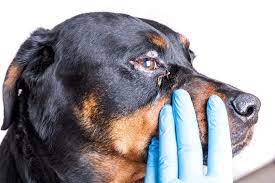
Conjunctivitis: Conjunctivitis, also known as “pink eye,” is an inflammation of the conjunctiva, a thin, transparent covering that covers the white area of the eye and lines the inside of the eyelids. This is one of the most common eye disorders in pets and can be caused by a variety of reasons, including allergies, infections (bacterial or viral), or irritants. Redness, heavy weeping, and ocular discharge are common symptoms. Conjunctivitis, if left untreated, can cause irritation and, in extreme cases, vision impairment.
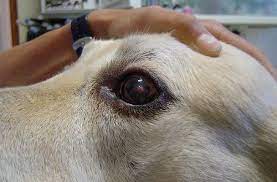
Corneal Ulcers: Corneal ulcers are lesions or abrasions to the cornea, the transparent, protective outer covering of the eye. They can happen as a result of foreign objects, scrapes, or other injuries. Corneal ulcers in pets are not only unpleasant, but they can also cause eyesight difficulties if left untreated. Identifying the indications, such as squinting, excessive blinking, and an eye that appears clouded or bluish, is critical for early intervention.
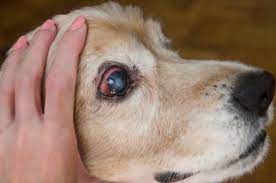
Cataracts: Cataracts are the clouding of the lens of the eye, which is frequent in older pets. This cloudiness prevents light from getting through the lens and onto the retina, causing visual impairment or even blindness. While cataracts are more common in senior pets, they can also be caused by heredity, diabetes, or eye injury.

Glaucoma: Glaucoma is a disorder that causes increasing pressure within the eye. If left untreated, high intraocular pressure can cause extreme pain, visual nerve damage, and eventual blindness. Redness, squinting, and increased tearing are early indicators of glaucoma in pets. Regular eye exams are essential for early detection and management.

Dry Eye (Keratoconjunctivitis Sicca): Dry eye develops when the eyes of a pet do not generate enough tears to keep the eyes lubricated. This illness can cause pain, redness, and visual issues. Pets may excessively touch their eyes or show signs of ocular pain. Medicated eye drops are frequently used to promote tear production and reduce discomfort.
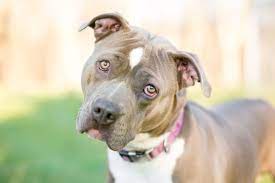
Eyelid Entropion and Ectropion: Eyelid entropion and ectropion are conditions in which the eyelids roll inward (entropion) or outward (ectropion). Entropion can cause the eyelashes to brush on the cornea, causing irritation and perhaps damaging the cornea. Ectropion can expose the inner lining of the eyelid, exposing it to discomfort and infection. Surgical correction is frequently required to address these issues.

Uveitis: Uveitis is an inflammation of the uvea, which is the central layer of the eye. Trauma, infections, or systemic disorders can all cause this condition. It frequently manifests as redness, discomfort, and light sensitivity. Uveitis can be a sign of more serious health problems and should be treated as soon as possible to avoid future difficulties.
Pet Eye Care Preventive Measures
Preventive pet eye care procedures are the foundation for ensuring your animal buddy has a lifetime of good eyesight and ocular health. Here’s a more in-depth look at these critical steps:
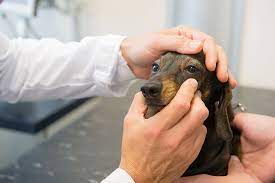
Regular Eye Exams: Just as regular doctor visits are necessary for people, scheduling regular check-ups with your veterinarian is vital for your pet’s eye health. Regular eye exams allow your veterinarian to spot any problems early, increasing the likelihood of effective treatment. These examinations also allow you to ask questions regarding your pet’s ocular health and address any concerns you may have.

Maintain a Safe Environment: Your pet’s living place should be a safe refuge for their eyes. Remove any potential risks that could impair their vision. This involves removing any sharp items, chemicals, or plants that could cause discomfort or injury to the eyes. Make sure your pet’s environment is free of anything that could harm their eyes.

Proper Nutrition: A balanced diet is not only important for your pet’s overall health, but it also contributes to optimal eye health. Make certain that their meal contains critical elements such as vitamins and minerals. Fish oil contains omega-3 fatty acids, which can be especially useful for eye health and may help lessen the risk of some eye disorders.
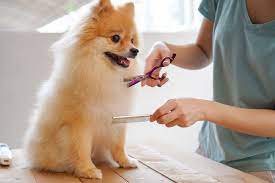
Grooming: To avoid irritation, keep the hair around your pet’s eyes well-trimmed. Long fur can cause irritation, discharge, and an increase in the risk of eye infections. Cleaning their eyes on a regular basis, especially in breeds prone to frequent tearing, can help avoid buildup and infections.

UV Radiation Protection: Just as too much sun exposure can hurt our eyes, certain pets are photosensitive. When your pet is outside, consider using pet sunglasses to protect their eyes, especially during high sunshine hours. Light-colored or hairless breeds are especially vulnerable to UV radiation’s harmful effects, and taking steps can help prevent problems like photokeratitis (sunburn of the eyes).
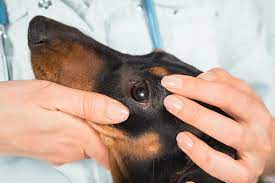
Preventing Eye Injuries: Because dogs and cats are inherently interested, they may find themselves in circumstances where eye injuries might develop. Be wary of sharp objects, chemicals, and potential eye risks in their environment. If your pet participates in sports or outdoor activities, consider utilizing protective eyewear.
First Aid For Pet Eye Injuries
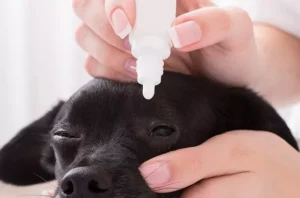
Every pet owner should be able to offer first aid for their pet’s eye damage. Here’s a full description of what to do if you have an eye injury:
Wash Their Eyes: If you find a foreign object in your pet’s eye, the first thing you should do is gently flush the eye with a sterile saline solution. This will aid in the removal of the object and any potential irritants. To avoid further harm, use a clean, lint-free cloth or gauze soaked in saline. Flush from the inner corner of the eye outward to avoid pushing the debris deeper into the eye.
Keep Them Calm: It’s critical to keep your pet as peaceful as possible throughout the procedure. To reassure them, hold them softly and speak soothingly to them. Pets can easily become upset when they perceive discomfort or anxiety, so keeping the surroundings quiet is critical to preventing the injury from worsening.
Cover the Eye: In cases of serious injuries, a clean, soft cloth can be used to cover the wounded eye. This improvised eye patch can shield the eye from further harm and lessen the likelihood of your pet scratching or rubbing it. However, avoid applying any pressure to the eye, as this might aggravate the condition.
Seek Veterinary Care: Even if the damage appears small after basic first aid, you must see your veterinarian. They are qualified to determine the extent of the injury and administer the necessary treatment. In some circumstances, what appears to be common eye disorders in pets conceals more serious underlying conditions, and prompt professional analysis is critical to ensuring the best outcome for your cat.
When to Seek Professional Assistance
Knowing when to seek professional assistance for your pet’s eye problems is critical to their ocular health. Here are some examples of when you should see a veterinarian or a veterinary ophthalmologist:

Any Ongoing Discomfort: If your pet shows evidence of ongoing discomfort, such as pawing at their eye, squinting, or displaying signs of pain, it is critical that you visit a professional. These actions could be a sign of common eye disorders in pets that need to be addressed right away. Constant discomfort can have a negative impact on your pet’s well-being and quality of life.

Abnormal Appearance: Any changes in your pet’s eye, such as cloudiness, abnormal discharge, or an unusual appearance, should not be overlooked. These can be symptoms of underlying diseases such as infections, cataracts, or corneal abnormalities. Early detection and treatment for pet eye issues are critical for avoiding future consequences.
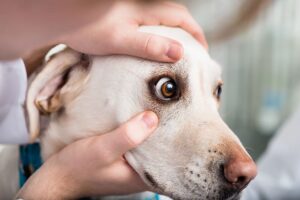
Sudden Blindness: A medical emergency exists if your pet experiences a sudden loss of vision. Glaucoma, retinal detachment, or trauma are just a few of the severe illnesses that can result in blindness. To establish the reason and commence proper treatment, a veterinarian or veterinary ophthalmologist must be consulted immediately.
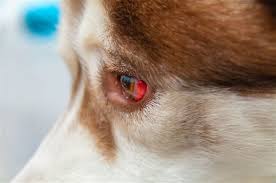
Trauma or Damage: Any major eye damage, whether caused by a foreign object, a conflict, or an accident, requires immediate treatment for pet eye issues by a professional. Corneal injury, lacerations, and even globe rupture can arise from eye trauma. Early evaluation is required to ascertain the extent of the injury and to avoid consequences.

Ocular Disease: If your pet has been diagnosed with a chronic ocular illness, such as glaucoma or cataracts, regular follow-up sessions are essential. Ocular illnesses may necessitate continual management and therapy modifications to maintain your pet’s ocular health and eyesight. Regular visits to a veterinary ophthalmologist ensure that the problem is properly monitored and treated as necessary.
Role of Veterinary Ophthalmologists
A veterinary ophthalmologist’s involvement is critical in the diagnosis and treatment for pet eye issues. Here’s a breakdown of everything you need to know about their job:
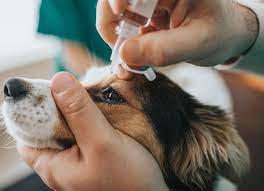
Medical Treatment: Veterinary ophthalmologists are highly qualified specialists who receive additional education and training to become experts in the diagnosis and treatment of eye disorders in pets. This specific knowledge is essential in dealing with the complexities of ocular health in a wide range of species, from dogs and cats to more exotic pets. Their comprehensive expertise in ocular anatomy, physiology, and pathology enables them to properly treat even the most difficult and rare eye disorders.
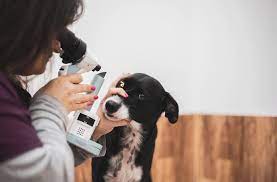
Diagnostic Instruments: Veterinary ophthalmologists have access to a wide range of cutting-edge diagnostic instruments and technology that are critical for accurate diagnosis and treatment. Slit lights, tonometers for detecting intraocular pressure, and electroretinography devices for evaluating retinal function allow for early diagnosis. These instruments provide vital insights into the anatomy and function of the eye, allowing for the detection of abnormalities that would otherwise be impossible to identify using standard veterinary equipment.
Note: There might be affiliate links mentioned here. We may receive a commission if you purchase a product through an affiliate link. There is no additional charge for you. Please do your own research before making any online purchases.
Surgical Skill: Veterinary ophthalmologists are highly competent surgeons who can undertake delicate and sophisticated eye procedures. These operations, such as cataract removal, corneal transplants, and eyelid adjustments, frequently necessitate a high level of precision and competence. Ophthalmologists can provide the finest level of care when surgery is required to repair or preserve a pet’s vision. Their knowledge is extremely useful when dealing with eye diseases that could have resulted in blindness or significant discomfort.
Treatment Options for Pet Vision Issues
Treatment for pet eye disorders is as varied as the difficulties themselves, with treatments suited to the unique condition and severity:
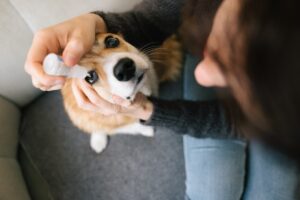
Medication: Medication is the initial and frequently major treatment for many common eye issues in pets. This can be in the form of eye drops or ointments that are administered to treat infections, reduce inflammation, or relieve dry eye. To ensure the success of these drugs, it is critical to follow your veterinarian’s advice on the frequency and proper administration of these medications. To avoid difficulties or a lack of progress, proper application is required.
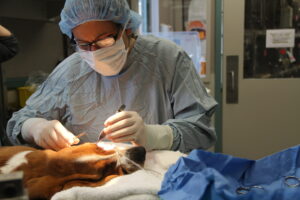
Surgery: In more severe circumstances, surgery may be required to resolve pet eye disorders. Surgical procedures are very important for conditions such as cataracts, glaucoma, and eyelid anomalies. Veterinary ophthalmologists, who are experts in this field, frequently perform these operations. Cataract removal, for example, can restore a pet’s eyesight, whereas glaucoma surgery can reduce intraocular pressure and protect the optic nerve from future damage.
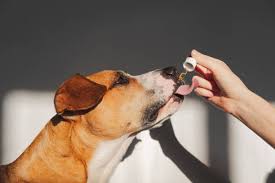
Nutritional Supplements: Dietary supplements, such as omega-3 fatty acids, can help with certain eye disorders. These supplements may aid in the management of problems such as dry eye and boost overall ocular health. However, before adding any supplements to your pet’s diet, you must first speak with your veterinarian. They can advise you on suitable dosages and which supplements would be most useful for your pet’s condition.
Lifestyle Changes: Managing underlying health concerns can have a substantial impact on improving or stabilizing pet eye problems in some circumstances. Controlling diabetes, for example, through medication and dietary changes, may aid in the management of diabetic cataracts. Similarly, lifestyle changes, such as maintaining a low-stress environment for a pet with uveitis, can aid in rehabilitation.
Living with a Blind or Visually Impaired Pet
With the correct assistance and changes, living with a vision-impaired pet can be a pleasant experience. Here are some crucial factors for assisting your pet in adjusting to their new lifestyle:
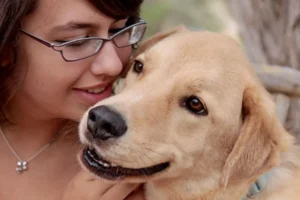
Pet Safety: First and foremost, your pet’s safety must be prioritized. Remove potential risks, sharp corners, and barriers to make your home safer and easier to navigate. Create open paths for your pet to go around without stumbling or bumping into items. Pet-proofing your home protects their physical health.

Verbal Cues: For a visually challenged pet, verbal communication is much more important. To guide them, use consistent verbal cues and directives. They can learn to navigate their surroundings more successfully by listening to your voice and using the tone you use. Simple orders such as “stop,” “turn,” and “come” can help keep them safe.
Scent and Sound: Encourage your pet to use their other senses for navigation, notably scent and sound. Scent trails can assist them in orienting themselves, while aural signals such as clapping hands or using a clicker can provide orientation cues. These sensory aids allow them to walk around more confidently.

Follow a Routine: Pets thrive on routines and familiarity, which are especially important for sight-challenged animals. Making abrupt changes to their environment might induce anxiety and confusion. A steady schedule and setting comfort and stability allow your pet to feel comfortable.
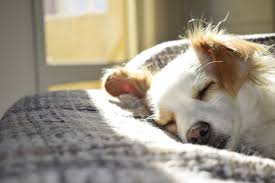
Specialized Products: There are things available to help vision-impaired pets have a better life. Nonslip mats provide firm footing, allowing your pet to stroll without slipping. Protective barriers can keep children out of potentially dangerous situations. Consider these accessories to make your pet’s life easier and more comfortable.
FAQs
What is the significance of pet eye care?
Pet eye care is essential since a pet’s eyes are not just windows to the soul but also key sensory organs. Maintaining good eye health ensures that your pet can navigate the world comfortably and that their overall well-being is maintained.
How frequently should I have my pet’s eyes examined?
A routine eye exam should be scheduled at your regular veterinary check-ups. Typically, this means at least once a year, but depending on your pet’s age and special needs, your veterinarian may recommend more frequent checks.
Can pets develop cataracts in the same way that humans do?
Yes, pets can develop cataracts, which cause the lens of the eye to fog. Senior pets frequently develop cataracts, but they can also develop from diabetes, eye injury, or heredity.
What should I do if my pet’s eye has a foreign object in it?
If your pet has a foreign object in their eye, gently flush the eye with a sterile saline solution while keeping them calm. Cover the affected eye with a soft towel and seek immediate veterinarian attention to determine the extent of the injury.
How can I assist my vision-impaired pet in adjusting to their new life?
To assist your visually impaired pet in adapting, provide a safe environment, provide consistent verbal cues, encourage reliance on scent and sound, follow a constant schedule, and consider utilizing specific goods made for visually impaired pets.
What are the most prevalent symptoms of glaucoma in pets?
Redness in the eye, squinting, excessive weeping, and clouded corneas are all common symptoms of glaucoma in pets. If you detect any of these symptoms, you must seek immediate veterinarian assistance.
Are some pet breeds more prone to eye problems than others?
Yes, some breeds are more prone to specific eye disorders. Brachycephalic breeds such as Bulldogs, for example, may be prone to corneal difficulties, while Siberian Huskies may acquire conditions such as progressive retinal atrophy. It is critical to be aware of breed-specific dangers and to adopt appropriate preventive actions.
What should I feed my pet to help their vision?
A healthy diet rich in key nutrients is essential for general health, including eye health. Fish oil contains omega-3 fatty acids, which can be very important for maintaining good eye health. Consult your veterinarian for dietary advice tailored to your pet.
Can I use human eye drops to treat my pet’s vision issues?
Never use human eye drops on your pet without first speaking with your veterinarian. Some human eye drops may be harmful to pets and may aggravate their illness. Before administering any drug, always seek professional counsel.
What exactly is the distinction between a veterinarian and a veterinary ophthalmologist?
A veterinarian is a general practitioner who can treat a variety of pet health problems. A veterinary ophthalmologist, on the other hand, is a specialist with specialized training in diagnosing and treating complex eye problems in animals. They have access to sophisticated equipment and, when necessary, undertake complex eye procedures. For specific eye-related disorders, your ordinary veterinarian may refer you to a veterinary ophthalmologist.
Conclusion
Pet eye care is an important part of being a caring pet owner. Understanding the structure of a pet’s eye, recognizing common eye disorders, taking preventive measures, and understanding when to seek expert treatment for pet eye issues are all important for maintaining your pet’s eyesight and overall well-being. Your devotion to your pet’s ocular health, whether it’s a routine eye exam or treatment for a specific eye disease, can ensure a happy and rewarding life for both you and your cherished companion.
Cats have been our constant companions for thousands of years, and for good reasons. They are among the most popular pets in the world, noted for their independence while being friendly.
Table of Contents
Introduction
Whether you’re a first-time cat owner or thinking about adding a new feline member to your family, choosing the correct cat breed for your lifestyle is critical. Different breeds have different personalities, care needs, and energy levels, which can have a big impact on how well they fit into your life.
In this comprehensive article, we’ll look at the intriguing world of cat breeds, their distinguishing qualities, and how to choose the right cat breed for you. We’ll take into account aspects like activity level, grooming requirements, and temperament to help you make an informed decision and maintain a happy, harmonious relationship with your new feline companion.
Understanding the Basics of Cat Breeds
Cats, our cherished companions for thousands of years, come in a wide range of breeds, each with its own set of qualities and characteristics. This variety is the result of decades of careful breeding to emphasize specific characteristics such as coat style, color, size, and temperament. Cats, like dogs, are classified into several breeds, each with its own specific characteristics, making the selection of a feline partner an intriguing and personal undertaking.
In this analysis of the basics of cat breeds, we’ll look at how cats are classified and identify the key differences between them. This knowledge is useful in making an informed decision when choosing the right cat breed for your lifestyle.
- Cats of Purebred Origin

Purebred cats are the feline equivalent of royalty. These majestic creatures are the result of generations of meticulous breeding to achieve precise breed requirements. As a result, they frequently exhibit predictable traits and qualities that adhere to the established norms of the breed. Siamese cats, for example, are known for their beautiful blue almond-shaped eyes, while Persian cats have long, luxuriant fur and a peaceful disposition. The magnificent Maine Coon, on the other hand, stands out for its enormous stature, tufted ears, and gregarious personality. These cats are often associated with breed-specific characteristics, and their pedigree is well documented.
- Domestic Longhair and Shorthair Cats
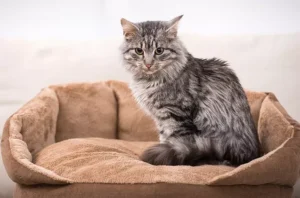
Domestic shorthair and longhair cats, unlike purebred cats, do not comply with certain breed requirements. These cats are the beautiful product of Mother Nature’s artistry, combining numerous breeds and their distinct characteristics. Domestic shorthairs can have coats of varied colors and patterns, but domestic longhairs can have a variety of fur lengths and are frequently a combination of breeds. What they lack in pedigree, they make up for in originality, diversity, and adaptability. These cats are known for their resilient and easygoing personalities, making them ideal companions for households looking for a cat that has it all.
- Crossbred Cats
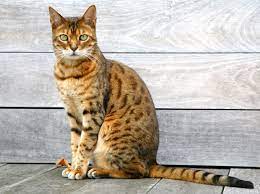
Hybrid cats provide an insight into the wild side of feline breeding. These fascinating creatures are the result of combining domestic cats with their wild cousins, such as the Bengal, which carries Asian leopard cat traits. Hybrid cats have different appearances and mannerisms that typically resemble those of their wild predecessors. Bengals, for example, have beautifully marked coats that resemble those of their wild forebears and are lively and playful. The Savannah, serval cat crossed with a domestic cat, is recognized for its exotic appearance and energetic attitude.
- Cats of Distinction

Specialty cats are the outliers of the feline world, with distinct physical traits that distinguish them from other breeds. The Sphynx, a beautiful hairless breed, is an excellent example of a specialist cat. Despite their lack of fur, Sphynx cats have an extremely charming personality. They are known for being curious and affectionate. Sphynx cats are prized for their unusual appearance and warm, cuddly temperament, enticing individuals who enjoy the unusual.
Personal preferences ultimately determine whether you acquire a purebred or mixed-breed cat. Each cat breed delivers its own set of pleasures and rewards. Some people like the beauty and dependability of purebred cats, while others enjoy the unique and individualistic appeal of mixed-breed cats. Understanding these broad kinds of cat breeds is the first step in the enjoyable process of choosing the right cat for your individual lifestyle. Whatever you decide, the friendship you develop with your furry pet will be cherished and long-lasting.
Evaluating Your Lifestyle
Choosing the right cat breed is much more than just selecting a cute or exotic-looking feline; it’s about finding a companion who fits your lifestyle and provides you joy every day. Assessing your lifestyle is an important part of this decision-making process on how to choose the right cat breed. It ensures that your new feline companion is a suitable fit for you and your family. Here are some important lifestyle factors to consider while choosing the best cat breed:
- Level of Activity
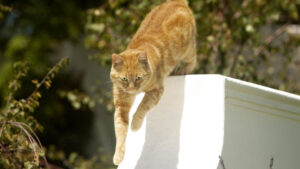
Consider your own level of exercise and preferences. Do you prefer outdoor activities, energetic pursuits, and regular exercise, or do you prefer a more relaxed, indoor-oriented lifestyle? Cat breeds, like people, have variable energy levels. Some cats, like the Siamese and Bengal, are extremely active and require a lot of playtime to keep them happy and healthy. Breeds like the Persian and Ragdoll, on the other hand, prefer a peaceful indoor environment. It is critical to match your activity level with that of your future feline partner for both your enjoyment and the cat’s well-being.
- Living Area
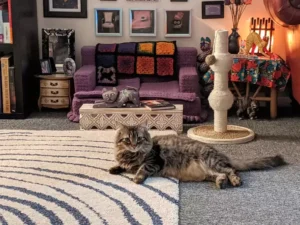
Another important element to consider is the living environment you provide for your cat. Do you live in a large house with plenty of space or in a small apartment with restricted space? The amount of room available can have a big impact on your cat’s comfort and exercise chances. Larger, more energetic breeds, such as Maine Coons or Abyssinians, frequently flourish in larger, more open habitats that allow them to participate in stimulating activities. Smaller living quarters, on the other hand, may be appropriate for less active breeds or senior cats who are comfortable with indoor existence.
- Allergies

Consider any allergies in your family. Allergies can be a major issue when it comes to how to choose the right cat breed. While no cat is completely allergy-free, certain breeds are thought to be more allergy-friendly than others. Breeds with lower shedding and fewer allergenic proteins in their saliva or dander, such as the Russian Blue or the Sphynx, may be better suited to allergy sufferers. Regular grooming and keeping a clean living environment can also aid in the reduction of allergic reactions.
- Domestic Situation
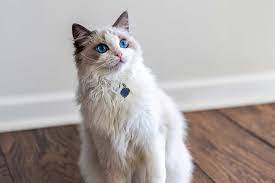
If you have children or other pets in your home, you must select a cat breed with a temperament that is appropriate for a family setting. Some breeds, such as the Maine Coon and the Ragdoll, are known for their patience and gentle nature, making them ideal for families with children. Others, such as the Bengal, may necessitate additional supervision due to their active and playful nature. The compatibility of your cat with existing family members is critical for creating a harmonious and safe environment.
- Work Timetable

Consider your work schedule and the frequency with which you are away from home. Cats vary in their independence, so it’s critical to choose a breed that fits into your daily routine. Scottish Fold and British Shorthair cats are more independent and can tolerate longer periods alone. Highly social breeds, such as the Siamese or Burmese, may become distressed if left alone for extended periods of time. It is critical for your cat’s well-being to ensure that his or her requirements for companionship and connection coincide with your work schedule.
- Grooming and Maintenance
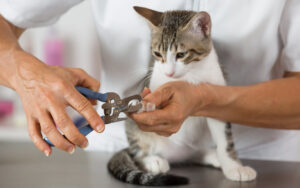
Are you willing to devote time and effort to grooming your cat? Some breeds have high grooming requirements, while others are low-maintenance. Long haired breeds like the Persian or the Maine Coon require regular brushing to prevent matting and preserve their coats. In contrast, short haired breeds like the American Shorthair or the Bombay have few grooming requirements. The time and energy you’re prepared to commit to grooming can impact your choice of breed.
Now that you’ve examined your lifestyle, it’s time to explore various cat breeds and how they connect with your daily life.
Choosing the Right Cat Breed
The optimal cat breed for you will depend on how well their qualities and requirements complement your lifestyle. Here is a complete description of different cat breeds, their personalities, care needs, and how they fit into diverse lifestyles:
- Ragdoll

Personality: Ragdolls are recognized for their gentle and submissive demeanor. They’re affectionate, generally wanting human interaction, and they have a penchant for turning limp when picked up, hence the name.
Activity Level: These cats are normally laid-back and not particularly active. They like to relax and be pampered.
Grooming and Care: Because Ragdolls have semi-long fur, regular grooming is required to prevent matting.
Family Friendly: Ragdolls make wonderful family cats since they are gentle with children and other pets.
Living Environment: They thrive in both apartments and houses.
Allergies: Some allergy sufferers prefer Ragdolls because of their low shedding.
- Siamese Cat

Personality: Siamese cats are very vocal, gregarious, and affectionate. They have a lot of fun engaging with their human friends.
Activity Level: Siamese cats are extremely energetic and require a great deal of mental and physical activity.
Grooming and Care: Because of their short coat, they require less care.
Family Friendly: Siamese cats can be wonderful with families, but their high energy level may be too much for young children.
Living Space: They thrive in larger homes with plenty of room to run around.
- Coon of Maine

Characteristics: Maine Coons are friendly and social giants. They are commonly referred to as “gentle giants” because of their playful and friendly attitude.
Activity Level: They are lively cats who enjoy playing and going on excursions outside.
Grooming and Care: Maine Coons have long, luxuriant fur that must be groomed on a regular basis.
Family Friendly: They are ideal for families because of their pleasant and gentle demeanor, making them perfect for youngsters.
Living Space: Given their size and activity level, larger homes are excellent for Maine Coons.
Allergies: Maine Coons are not hypoallergenic.
- Persian

Personality: Persian cats are reserved, peaceful, and quiet. They are well-known for their kind and caring nature.
Activity Level: They love resting in a peaceful setting and have a low activity level.
Grooming and Care: Persian cats’ long, dense fur necessitates extensive grooming.
Family Friendly: Their tranquil demeanor makes them ideal for families, particularly those who prefer a quieter lifestyle.
Living Space: Persians thrive in modest apartments and houses.
Allergies: They are not thought to be hypoallergenic.
Note: There might be affiliate links mentioned here. We may receive a commission if you purchase a product through an affiliate link. There is no additional charge for you. Please do your own research before making any online purchases.
- Bengal

Characteristics: Bengals are lively and playful. They have a wild appearance and like playing with others.
Activity Level: Bengals are extremely active and demand a lot of playing as well as cerebral stimulation.
Grooming and Care: Their short coat requires little maintenance.
Family Friendly: Bengals are a fantastic choice for families, but their energy level may be too high for very small children.
Living Space: They thrive in larger houses with plenty of room for play and exploration.
Allergies: Bengals do not have hypoallergenic properties.
- Scottish Fold

Characteristics: Scottish Folds are noted for their distinctive folded ears and pleasant, easy going demeanor.
Activity Level: They are moderately active and love playtime, but they are also satisfied resting.
Grooming and Care: Their short to medium coat requires little upkeep.
Family-Friendly: Scottish Folds make excellent family dogs, particularly in households with older children.
Living Space: They are versatile and may live in a variety of settings.
Allergies: They are not thought to be hypoallergenic.
- Sphynx

Personality: Sphynx cats are noted for their hairless appearance as well as their inquisitive, sociable, and extroverted personality.
Activity Level: They are physically active and like playing and exploring.
Grooming and Care: Despite popular belief, Sphynx cats require regular bathing to maintain skin health.
Family Friendly: They are appropriate for families who are not turned off by their unconventional appearance.
Living Space: They adapt well to a variety of living environments.
Allergies: Due to their lack of fur, Sphynx cats may be a better choice for people who suffer from allergies.
- Russian Blue

Characteristics: Russian Blues are noted for their exquisite beauty and reserved but friendly personality.
Activity Level: They are physically active and like participatory play.
Grooming and Care: Because of their short, dense coat, they require little care.
Family Friendly: They can be ideal for families who prefer a more peaceful existence.
Living Environment: Russian Blues thrive in apartments and houses.
Allergies: Because of their lesser shedding, they may be healthier for people who suffer from allergies.
- Abyssinians

Personality: Abyssinians are lively, playful, and inquisitive cats. They like to be challenged mentally and physically.
Activity Level: They are very energetic and require a lot of exercise and play.
Grooming and Care: Their short coat requires little maintenance.
Family Friendly: Abyssinians can be good for families, although they can be too energetic for very young children.
Living Space: They thrive in homes with plenty of room to run and play.
Allergies: Abyssinians do not have hypoallergenic properties.
- Burmese

Characteristics: Burmese cats are friendly and outgoing, and they like connecting with their human friends.
Level of Activity: They are moderately active and enjoy interactive play.
Grooming and Care: Because of their short coat, they require less care.
Family-Friendly: Burmese cats are ideal for households with children.
Living Space: They adapt well to a variety of living environments.
Allergies: They are not thought to be hypoallergenic.
Making the Best Decision
Choosing the right cat breed is an important decision that can provide years of friendship and joy. This decision, however, should be made after careful consideration of your lifestyle, preferences, and the unique characteristics of various cat breeds. Here are some extra ideas to assist your quest of how to choose the right cat breed and ensure you make an informed and responsible decision:
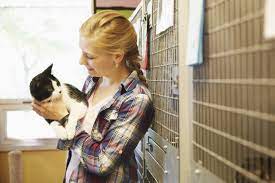
Visit Shelters: Visiting local animal shelters and rescue organizations is one of the most rewarding ways to find your new feline friend. Countless cats in need of loving homes are frequently housed in shelters. These cats come from all walks of life and can be extremely affectionate and grateful companions. Many mixed-breed cats can be found in shelters and can be an excellent fit for a variety of lifestyles. Don’t underestimate the allure of a shelter cat; they have their own distinct beauty.
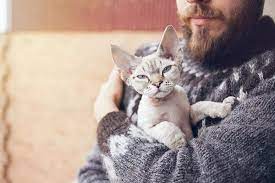
Talk to Breeders: If you determine that a specific purebred cat is the ideal fit for you, it’s critical to connect with responsible breeders who emphasize their cats’ health and well-being. Responsible breeders follow ethical breeding procedures and are concerned with the wellbeing of their feline friends. When speaking with breeders, inquire about the breed’s specific traits and characteristics, as well as any potential health issues associated with the breed. A reputable breeder will inform you about the cat’s ancestry, medical history, and any required vaccinations or health clearances.
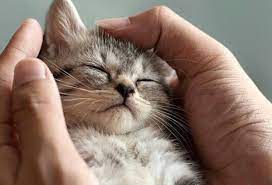
Spend Time with the Cat: Before making a final decision, spend as much time as possible with a cat. Visit breeders, shelters, or foster homes to discover if the cat’s personality matches yours. Interacting with a cat in person can help you determine its temperament, energy level, and compatibility with your family. It’s a chance to watch their behavior and form an initial relationship.
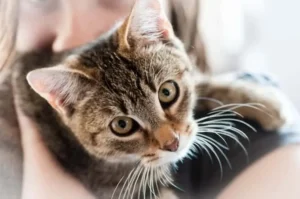
Consider Adoption: Adopting a cat is a wonderful experience. By giving a loving home to a needy cat, you not only gain a loyal companion but also contribute to animal welfare. Shelter cats, regardless of breed, can provide unconditional love and gratitude. When you rescue a cat, you form a special bond with them because you know you’ve given them a second chance at happiness.
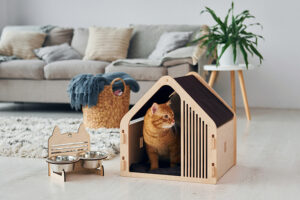
Prepare Your Home: Before bringing your new cat home, ensure that your living space is cat-friendly. Remove potential hazards that might harm your pet, such as toxic plants, chemicals, or small objects they might swallow. Provide essential supplies like litter boxes, scratching posts, toys, and cozy resting spots. Making your home safe and comfortable for your new cat will help them adjust and feel at peace in their new surroundings.
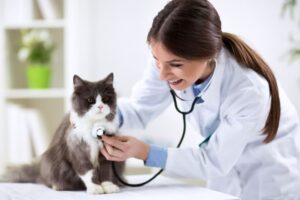
See a Veterinarian: All cats, regardless of breed, require regular veterinary care. Consult a veterinarian to ensure that you are completely equipped to meet your cat’s healthcare needs. Discuss immunization regimens, preventive care, and any health risks specific to the breed you select. Keeping your cat healthy and happy is a lifelong responsibility.
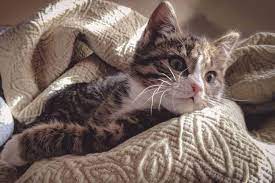
Patience and Commitment: Cats can live for 15 years or more, so be prepared to make a long-term commitment if you get a cat. It may take some time to form a deep bond with your cat, so be patient and persistent in your care and attention. You’ll develop a strong bond with your feline partner over time, one filled with love, trust, and innumerable cherished memories.
FAQs
What are the essential elements to consider when choosing a cat breed for my lifestyle?
You should consider aspects including your activity level, dwelling space, allergies, family status, job schedule, and grooming and maintenance preferences when choosing the right cat. These elements will help you pick a cat that fits nicely into your daily life.
What is the distinction between purebred cats and mixed-breed cats?
Purebred cats are the result of selective breeding for specific breed standards, and their characteristics are frequently predictable. Mixed-breed cats lack breed criteria and exhibit a wide range of features dependent on their ancestors.
Are hybrid cats suitable for households?
Hybrid cats are the offspring of domestic cats and wild cat species, and they can have distinct appearances and behaviors. They may be appropriate for some households, but their unique demands and traits must be carefully examined.
Which cat breeds are thought to be hypoallergenic?
While no cat is completely allergy-free, certain breeds are thought to be more allergy-friendly than others. Because of their decreased shedding and allergenic protein levels, breeds like the Russian Blue and Sphynx may cause fewer allergic reactions in some people.
After adopting or acquiring a cat, how can I ensure its health and well-being?
All cats require regular veterinary care. Consult a veterinarian to ensure that you are completely equipped to meet your cat’s healthcare needs. Discuss immunization regimens, preventive care, and any health risks specific to the breed you select.
Is it preferable to adopt a cat from a shelter or to buy one from a breeder?
Both options have advantages. Adopting a shelter cat ensures a loving home for a cat in need, regardless of breed. Buying from a reputable breeder can provide greater certainty in terms of breed features and ancestry. The decision is based on your preferences and priorities.
Before adopting or acquiring a cat, how can I know if its personality matches my expectations?
Spend as much time as possible with the cat before making a final decision. Interact with the cat at breeders, shelters, or foster homes to assess its temperament, energy level, and suitability for your family.
Can I give a caring home to an allergic cat in my household?
Yes, hypoallergenic cat breeds such as the Sphynx and Russian Blue may be a better option for households with allergy sufferers. Regular grooming and keeping a clean living environment can also aid in the reduction of allergic reactions.
Is a huge living space required to accommodate specific cat breeds?
The breed’s level of activity determines how much space a cat needs. Larger living spaces may suit more active breeds, such as Maine Coons, although less active breeds, such as Persians, can adapt well to smaller homes or apartments.
How long should I expect a cat to live, and what is the time commitment?
Cats can live for up to 15 years, so be prepared to make a long-term commitment. It may take some time to form a deep bond with your cat, so be patient and persistent in your care and attention. You’ll develop a strong and lasting bond with your feline buddy over time.
Conclusion
Choosing the best cat breed for your lifestyle is a big decision that will have a big impact on both your life and the life of your new feline buddy. When making this decision on how to choose the right cat breed, consider your daily routine, living situation, and personal preferences. Remember that all cats, regardless of breed, deserve love, care, and a forever home, so make your decision with the intention of giving your new pet the best life possible. Whether you choose a purebred or a mixed-breed cat, it will definitely provide you with a lifetime of love, joy, and companionship.



